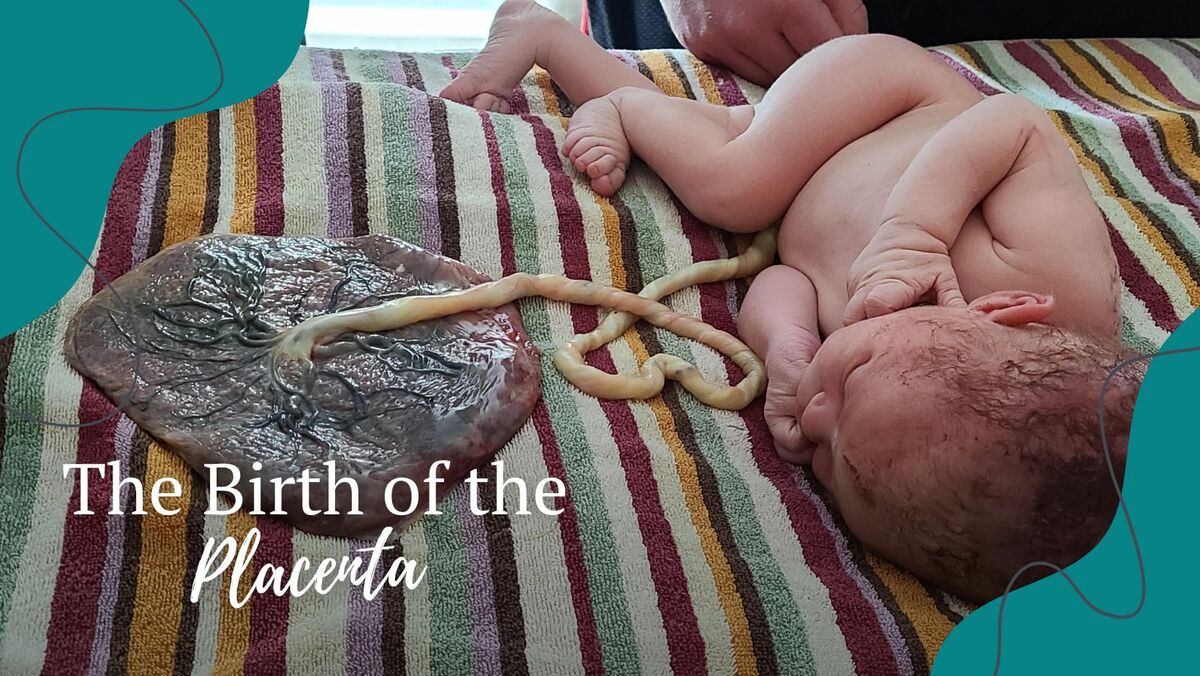The Birth of the Placenta

Childbirth is one of the most beautiful and natural events in a mama’s life. It symbolizes her formal transition into motherhood and brings a new life into the world.
Everybody knows that childbirth results in the birth of a new, fresh-faced baby, but often overlooked is the subsequent birth of the placenta.
The placenta, a flat and circular organ that develops in the uterus during the gestation period, is responsible for nourishing the fetus through the umbilical cord.
Since its only purpose is to feed the growing baby in the mama's womb after the baby has been delivered, the mama's body no longer needs the placenta and it is expelled.
However, the birth of the placenta is a complex process that begins before the baby is even born.
Today’s post will discuss the birth of the placenta and a few key things you need to know about the power of the placenta. Keep reading to learn more!
Understanding Placenta Birth
Pregnancy is one of the most complex processes the human body will ever undergo.
It is not as simple as growing a baby, then delivering the baby. During pregnancy, the woman's body produces many hormones and it even develops a new organ called the placenta.
Since the placenta is only useful during pregnancy, after the baby is born, the mother’s body births the placenta shortly after.
But the process of placental birth begins before the baby is even born.
Oxytocin, a hormone released by the posterior pituitary gland, is a key hormone that deals with birthing and bonding. Oxytocin also plays a significant role in regulating contractions.
When the birth of the baby nears, high levels of oxytocin circulate in the mama's bloodstream. This increase in oxytocin creates strong uterine contractions and signals the start of childbirth.
During childbirth, the placenta drains its blood into the baby, greatly reducing its volume. After the baby is delivered, the contraction pattern is interrupted because the uterus is suddenly empty, and the uterus must return to its pre-pregnancy size.
After a short rest period of about two minutes, contractions will continue about every three to four minutes. These post-birth contractions allow the uterus to expel the lingering placenta and then return to pre-pregnancy size.
As contractions push the placenta out of the womb, the blood vessels within the placenta will become exposed and the mother will bleed. This is the only time during the birthing process that the mother will bleed naturally. Bleeding will stop as soon as the uterus has shrunken to the point where the exposed area has been sutured close.
Before the placenta is birthed, any remaining blood is forced back into the uterine lining. Uterine muscle fibers contract the blood vessels and additional blood is prevented from draining back into the uterus. This congestion results in the veins rupturing and the villi shearing off the uterine wall. A clot form behind the placenta and the organ slowly begins to peel away from the uterine wall.
A small gush of blood will appear as the umbilical cord lengthens. At this point, the placenta will move downwards out of the uterus where it is ultimately delivered.
Placenta Encapsulation with Stork Helpers
The placenta is a marvelous organ. Developed specifically for nourishing the baby during pregnancy, the placenta is packed full of vitamins and nutrients that supercharge the human body.
In recent years, many mamas have chosen to have their placenta dehydrated and encapsulated so they can reap the benefits of this highly nutritious organ.
When consumed, it is thought that the placenta helps ebb the severity of postpartum depression and encourages the production of breast milk.
If you are interested in having your placenta encapsulated, Stork Helpers has you covered.
Postpartum is no fun. Postpartum depression is even worse. Stork Helpers makes placenta encapsulation easy so you can enter postpartum with a little extra help.
If you are interested in learning more about placenta encapsulation, reach out to Stork Helpers today!

